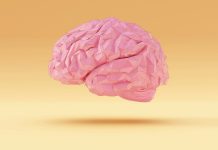
In a recent study published in Cell, researchers designed an experimental drug that may help reverse key symptoms of Alzheimer’s disease.
The drug works by reinvigorating a cellular cleaning mechanism that gets rid of unwanted proteins by digesting and recycling them.
The study is from Albert Einstein College of Medicine. One author is Ana Maria Cuervo, M.D., Ph.D.
In the study, the team confirmed that the drop-off in cellular cleaning that contributes to Alzheimer’s in mice also occurs in people with the disease.
In the 1990s, the researchers discovered the existence of this cell-cleaning process, known as chaperone-mediated autophagy (CMA).
CMA becomes less efficient as people age, increasing the risk that unwanted proteins will accumulate into insoluble clumps that damage cells.
In fact, Alzheimer’s and all other neurodegenerative diseases are characterized by the presence of toxic protein aggregates in patients’ brains.
In the study, the team looked at single-cell RNA-sequencing data from neurons obtained postmortem from the brains of Alzheimer’s patients and from a comparison group of healthy individuals.
They found CMA activity was somewhat inhibited in people who had been in the early stages of Alzheimer’s, followed by much greater CMA inhibition in the brains of people with advanced Alzheimer’s.
By the time people reach the age of 70 or 80, CMA activity has usually decreased by about 30% compared to when they were younger.
Most peoples’ brains can compensate for this decline. But if there is a neurodegenerative disease, the effect on the normal protein makeup of brain neurons can be devastating.
This study shows that CMA deficiency interacts synergistically with Alzheimer’s pathology to greatly accelerate disease progression. The findings suggest that drugs for revving up CMA may offer hope for treating neurodegenerative diseases.
The team developed a novel drug that shows potential for treating Alzheimer’s. The new drug, called CA, works by increasing the efficiency of CMA.
It enabling CMA to get rid of tau and other defective proteins so they can’t form those toxic protein clumps.
The researchers tested the new drug in two different mouse models of Alzheimer’s disease and found oral doses of CA administered over 4 to 6 months led to improvements in memory, depression, and anxiety that made the treated animals resemble or closely resemble healthy mice.
Walking ability improved in the animal model in which it was a problem. And in brain neurons of both animal models, the drug strongly reduced levels of tau protein and protein clumps compared with untreated animals.
The team hopes to test their drug in human patients in the near future to improve the treatment of Alzheimer’s disease
If you care about Alzheimer’s disease, please read studies about to reduce risk of Alzheimer’s disease, avoid this food nutrient and findings of new depression drug may help treat Alzheimer’s disease.
For more information about Alzheimer’s disease prevention and treatment, please see recent studies about a new way to predict Alzheimer’s disease-like memory loss before it strikes and results showing that diet high in this nutrient may help fight against Alzheimer’s disease.
Copyright © 2021 Knowridge Science Report. All rights reserved.



